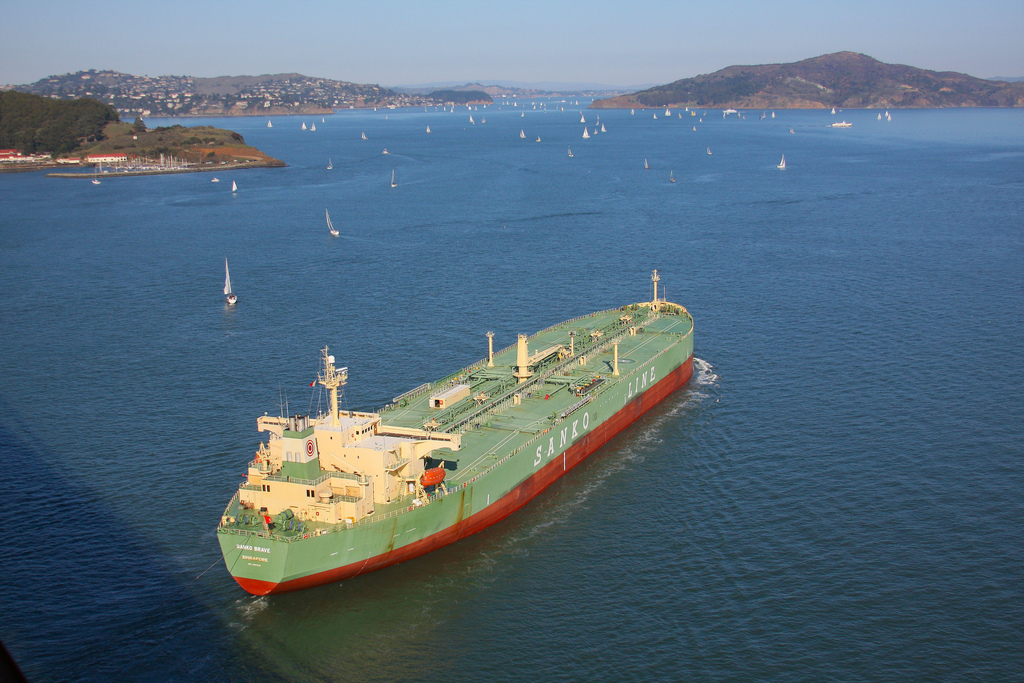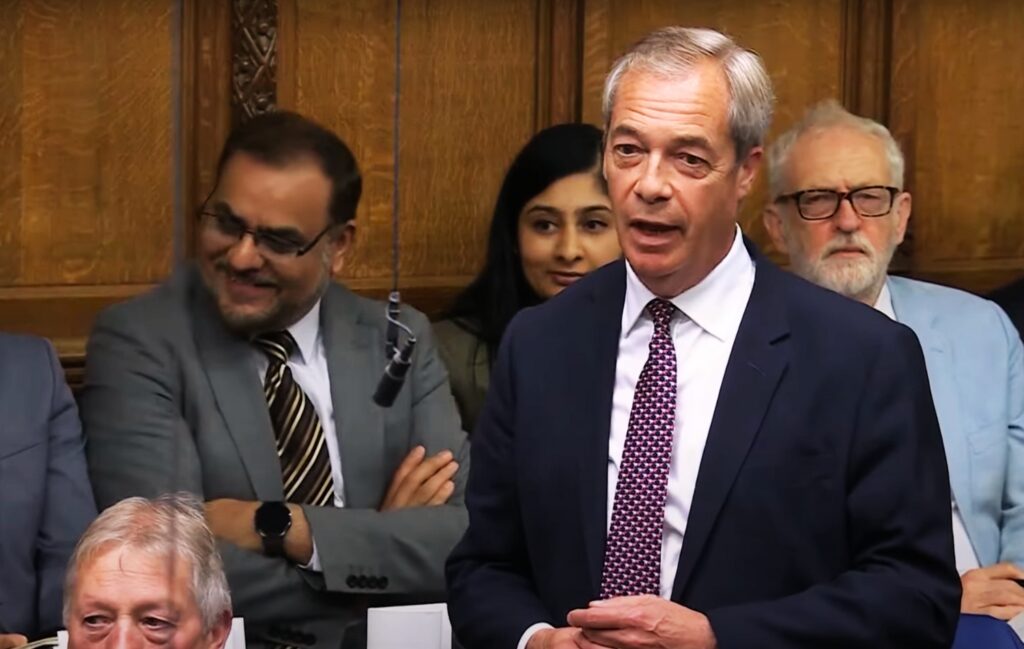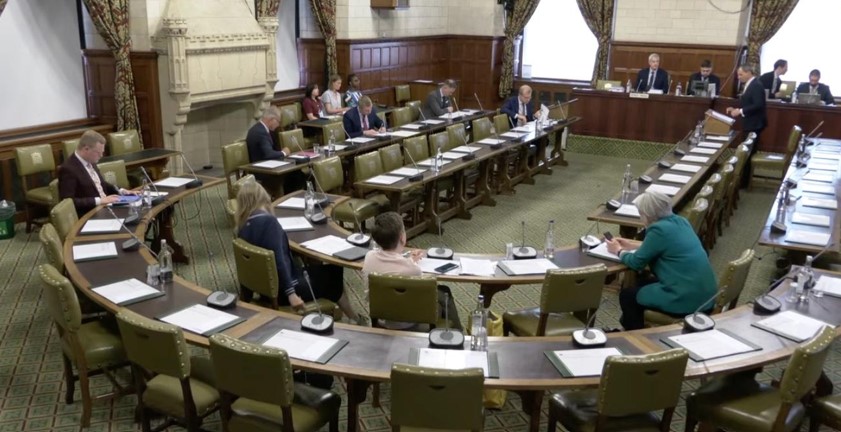Last week, oil companies in the United States exported approximately 1.2 million barrels of crude oil per day, setting a new record for exports since the ban on exporting crude oil was lifted in 2016. To put that in perspective, that is slightly more oil than the U.S. currently imports from Saudi Arabia.
This level of exports has “surprised” energy analysts, according to a report from CNBC. During the several-year campaign to end the crude oil export ban, the oil industry and its lobbyists peddled many arguments to justify the overturn, but a year after crude oil started leaving the U.S. for global markets, most of these predictions have quickly been proven wrong.
Myth: National Security and China
Harold Hamm was one of the biggest advocates for lifting the crude oil export ban. As CEO of fracking giant Continental Resources, he stood to profit if the ban were lifted. At a Congressional hearing on the implications of lifting the export ban, Hamm was asked about likely destinations for exported U.S. oil.
“Obviously with our allies, South Korea, people we trade with … Western Europe, South America, Eastern Europe,” Hamm told Congress.
“What about China?” asked Rep. Bob Goodlatte (R-PA)
“Canada?” Hamm replies.
“China,” says Goodlatte.
“I don’t see a lot of that trade happening,” Hamm responded.
Of course, at the time DeSmog noted that China was an obvious destination for American oil. And today, news commentary noting the recent increases in U.S. oil exports acknowledges that China is going to buy a lot of American oil (and has already started), putting to rest another myth used to sell the crude export ban overturn: that the oil would only go to allies and this was all about national energy security.
A recent article on CNBC also noted why China is going to continue being a destination for U.S. oil — because Chinese companies own U.S. fracking operations. At least two companies with significant Chinese investment, Devon Energy and Chesapeake Energy, were directly involved in lobbying to lift the export ban.
Another thing Hamm got wrong was his argument that American allies like South Korea were “forced to buy” oil from Iran because they couldn’t buy American oil. This argument was debunked by DeSmog at the time, and even now that American crude oil is available, Iran’s oil customers are still quite willing to do business.
For example, in 2016, while importing crude oil from the U.S. for the first time, South Korea increased its purchases of Iranian oil by over 160 percent. China, India, and Japan have also imported significantly more Iranian oil since the U.S. crude export ban was lifted.
So, the national security argument for lifting the ban appears to have been without merit. The reality is that multinational companies with foreign ownership are fracking for crude oil in the United States and now can sell it to the highest bidder on the global market — which often will be China.
Myth: It’s Not Economically Viable to Export U.S. Crude Oil
Another prediction used to support the ban’s overturn — but since proven wrong — was that exporting U.S. crude wouldn’t be economically viable at current oil prices.
“It’s universally agreed in the short term that we won’t see a flood of ships leaving for foreign ports because the economics aren’t right,” Sandy Fielden, director of energy analytics at RBN Energy, explained as the ban was being lifted.
A Fortune opinion piece titled “Why lifting America’s ban on oil exports won’t matter” pointed out that until the price differential between Brent crude and West Texas Intermediate (WTI) was greater than $4 a barrel, it wasn’t economically feasible to export U.S. crude oil.
Brent crude (also known as North Sea crude) has been the standard for global pricing of oil. West Texas Intermediate is the price for oil produced in the U.S., and with most of the oil landlocked and the U.S. previously unable to export oil, the price of WTI has been discounted compared to Brent. If the spread between the two oil prices is higher, WTI oil becomes more economically viable for other countries to buy.
“We don’t believe at current spreads there is any impact, as exports would not be profitable,” said Amrita Sen, chief oil economist at Energy Aspects Ltd. told Bloomberg at the end of 2015.
Once again, all of these predictions were wrong. In January 2017 the spread between Brent and WTI was never more than $3 a barrel and in December 2016, there was even a day that WTI was trading higher than Brent crude oil. And yet record amounts of crude were exported from the U.S. with those conditions in place.
Myth: “This is all about the consumers”
“Lifting the ban on U.S. crude oil exports would create American jobs, bolster the U.S. economy, and benefit consumers,” API president Jack Gerard wrote in a letter to Congressional leaders. “Lifting the ban would create 1 million jobs at its peak in 2018 …”
This is an interesting claim by Gerard. And one unlikely to turn out to be accurate. Gerard and others were championing the job-creating benefits of lifting the ban while at the same time saying they didn’t expect oil production to increase much with the lifting of the ban. Something didn’t add up.
In the middle of 2016, with U.S. crude exports at the highest levels in decades, Goldman Sachs predicted the impact oil industry hiring would have on the economy in 2018, which CNN Money reported: “… just to keep up with the expected ramp-up in drilling activity, the oil and gas industry would need to add 80,000 to 100,000 jobs between now and the end of 2018.”
So, even with crude exports blowing past all expectations (along with other forces at play), the industry as a whole might only create 100,000 jobs when API promised 1,000,000 jobs. This shortfall shouldn’t really be surprising. CNN Money reported that during the fracking boom years of 2009-2014, only 233,000 total jobs were created by the oil and gas industry.
Other than potential jobs, the main supposed benefit for consumers was that exporting crude oil would drive down the price of gasoline in the U.S. All of the major industry-funded studies reached this conclusion.
The Government Accountability Office reviewed four of these main studies and agreed that it was possible gas prices could come down as a result of lifting the crude oil export ban. However, they noted some scenarios where this would not be true.
“In particular, the response of the Organization of the Petroleum Exporting Countries (OPEC) could have a large influence on any international crude oil price changes. The projections in the RFF, IHS, and ICF International studies assumed that OPEC would not respond by attempting to counterbalance the effect of increased U.S. exports by reducing its countries’ exports. However, OPEC could seek to maintain international crude oil prices by pulling crude oil from the global market.”
Three of the four studies assumed OPEC would not respond by decreasing production. Yet OPEC agreed to reduce production. And oil and gas are significantly more expensive than before the crude export ban was lifted. That means pretty much all of the assumptions used to sell crude oil exports to the American people have ended up falling short.
But should we be surprised?
Main image: An oil tanker in San Francisco Bay. Credit: Michael Marfell, CC BY 2.0
Subscribe to our newsletter
Stay up to date with DeSmog news and alerts







